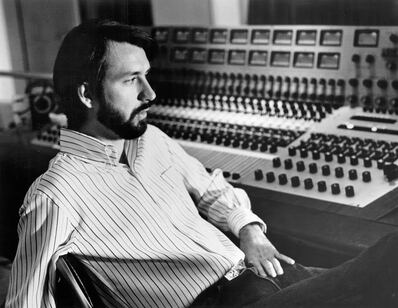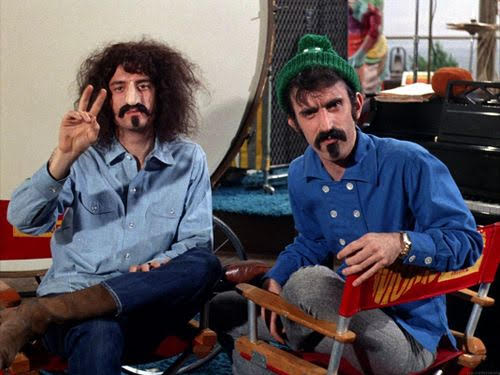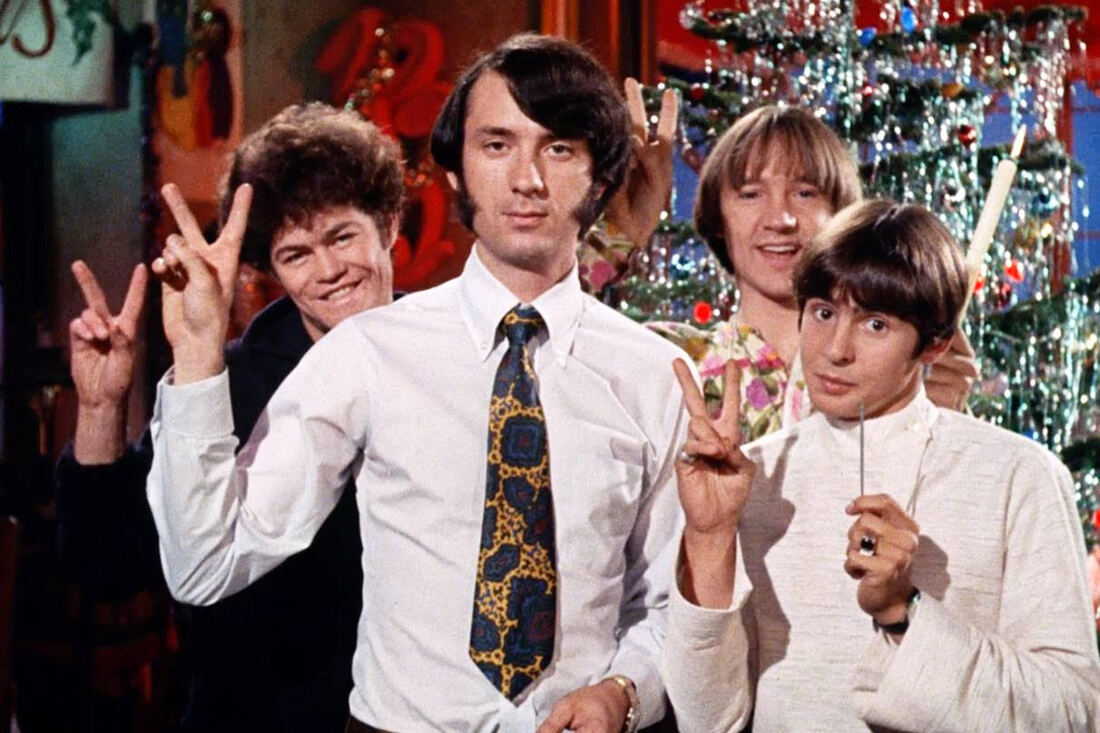 Mike Nesmith (1943 – 2021) Mike Nesmith (1943 – 2021) LONDON, ONTARIO – The death of Michael Nesmith this week at the age of 78, called forth a lot of mourning from ageing Monkees fans and a lot of sniping from half-informed curmudgeons who’d always regarded that deliberately manufactured group of ‘60s pop musicians (with their very own TV show and a line in commemorative lunch pails) as irredeemable capitalist stooges and soulless phonies. Yes, the Monkees were brought together in a totally inorganic way, contrived from the get-go to cash in on the success of The Beatles with a less discerning and younger audience. But the Monkees underwent a considerable evolution over the course of their short career and managed to provide more than a few decent tunes that stand up pretty well half a century later. And I look back with even deeper affection and regard for the much less celebrated work that Mike Nesmith produced once the Monkees had packed it in. The circumstances surrounding the development of the Monkees may have been artificial but there was nothing exceptional or criminal in the way that they tried - like every other pop artist in the world who releases a record - to conquer the charts and earn them a little or a lot of money. No song which the highly respected but commercially negligible John Stewart ever wrote, paid for more of his groceries than Daydream Believer. His success via the Monkees made his career possible. Other would-be recording artists with careers that hadn’t taken off yet who supplied tunes for rhe Monkees included Harry Nilsson, Neil Diamond and David Gates who later on headed up the band called Bread. The Monkees also had hits with songs supplied by some of the most prolific songwriting teams of the time; journeyman pros who specifically tailored their stuff for the Prefab Four like Gerry Goffin & Carole King, Tommy Boyce & Bobby Hart, Cynthia Weill & Barry Mann and Jeff Barry & Andy Kim. All of these composers were thrilled and notably enriched whenever the Monkees recorded one of their songs. For my money, their finest moment in the studio was their rendition of Goffin & King’s The Porpoise Song from their only movie, Head, a clip of which I attach here: https://www.youtube.com/watch?v=s0pGjnNC_v4 A comprehensive collection of their hits – such as the two-disc Rhino set which I possess and occasionally spin – is no more reprehensible than any similar anthology by acts like, say, The Turtles or The Association, to name but two other outfits of the period who also largely relied on outside composers to supply their songs. Often overlooked is the fact that there were two already quite accomplished musicians in the band from the very start – Mike Nesmith (more about whom later) and Peter Tork who auditioned to be part of the band on a tip from his friend Stephen Stills of Buffalo Springfield and Crosby, Stills & Nash fame. And the other two were hardly bereft of singing talent. Mickey Dolenz came from an LA show biz family, had starred as a child in a network TV series called Circus Boy and later sang with a couple of area rock bands that hadn’t amounted to much. No, he didn’t have any prior experience as a drummer but as I can personally attest, any meathead with even a perfunctory sense of rhythm can learn to play the drums competently enough if he gives it a go and this Dolenz proceeded to do. Because the diminutive British-born Davy Jones (who only played maracas and tambourine at first) snagged most of the covers of 16 magazine with his dreamy visage, he was commonly pegged as the group’s lead singer. And he did indeed have the finest voice in the band; an Anthony Newley-esque set of pipes which could caress its way through a ballad or belt out something much brassier. Jones had portrayed the Artful Dodger a couple years earlier in the Broadway production of Oliver. Fascinatingly enough, a then teenaged Jones was featured in a production number from that show, singing I’ll Do Anything for You, on the very same Ed Sullivan Show of February 9th of 1964 when the Beatles made their North American debut and officially took over the English-speaking world as the hottest craze in popular music. Viewing a tape of that particular program today, it’s hard to credit Sullivan’s reputation as a particularly brilliant entertainment impresario when you watch Ed try to subdue all those hopped up “little chickadees” who’d been screaming their heads off during the Beatles’ opening set of songs as he introduces some poor schlub named Fred Kaps who has to face an incredulously frustrated audience with magic tricks employing a deck of cards and a salt shaker. But it was the rather gorpy-looking Dolenz who actually had the better voice for rock and pop and who carried most of the Monkees’ lead vocals. At the end of the day, all four could sing beautifully. Check out some of the harmony work which these lads come up with on one of their rockier and more acerbic hits, Goffin & King’s Pleasant Valley Sunday: https://www.youtube.com/watch?v=APw64cpN3rE Or, as an even purer distillation of the talent at their disposal, give a listen to this seriously charming a cappella rendition of the 16th century Spanish Christmas Carol, Riu Riu Chiu that was featured in a Monkees’ Christmas show: https://www.youtube.com/watch?v=riG85oA6Wy4 Hired for their talent as singers and actors, of course the Monkees supplied their own vocals on their records. But after two quickly released LPs and a handful of singles which met with staggering success (even out-selling the Beatles for a brief period) Tork and particularly Nesmith started to chafe at the micro-management of their repertoire by their Svengali-like A&R man, Don Kirshner. And they also were smarting from the critical drubbing they were receiving in hipper-than-thou magazines like Rolling Stone and Crawdaddy for using session instrumentalists on their recording sessions. In fairness it must be pointed out that this scorn was being rather selectively applied. The use of session musicians was standard procedure at the time in LA and such highly respected bands as the Beach Boys, the Mamas & The Papas and the Byrds rarely got to play their own instruments in the studio either. What drew special attention to the Monkees in this regard was that when their TV show premiered in 1966 and their first records came out, the band was not yet ready to perform live concerts. It was Nesmith who led the charge in prying Kirhsner’s bubble-gummy fingers off every aspect of their recording career and from their third album (Headquarters) onward, they played all their own instruments and either composed or personally selected all their repertoire. They still moved truckloads of records for a while but sales did drop off – eventually quite catastrophically – for their post-Kirshner output. Nonetheless their finest achievements as recording artists can be found in the singles and four albums that were released during this middle period; Headquarters, Pisces, Aquarius, Capricorn & Jones Ltd, The Birds, The Bees & The Monkees and Head. The ever-feisty Frank Zappa whose We’re Only In It for the Money album with The Mothers of Invention was a brilliant send-up 1960s musical inanities came to the defense of the Monkees (in Rolling Stone magazine, no less) saying that their records were a lot better produced than anything being released by the oh-so-self-indulgent San Francisco bands of the day. And shortly after that, Zappa did a guest spot on their show where he and Mike Nesmith pretended to be one another and Zappa also made a cameo appearance in their movie, Head. For the duration of its two-year run The Monkees TV program was, for the most part, derivative and lame; an unsatisfying mashup of A Hard Day’s Night and Gilligan’s Island. And their only movie, produced after the show’s cancellation, was an anti-climactic box-office bomb which has subsequently found some favour with cultists who find its career-annihilating extremism kind of amusing. Largely written by Jack Nicholson and their show’s producer Bert Rafelson (who then went on to make one of my favourite movies of all time, Five Easy Pieces) Head is beautifully produced and hugely ambitious in its concept of deconstructing the pop culture industrial complex. But while undeniably brilliant in sections, it’s a pretty hot mess that doesn’t hang together at all well and probably best serves as a warning for artists who hope to be understood to lighten up on their intake of recreational drugs. And while it’s also true that none of the Monkees albums stand up as unalloyed gems from end to end, the boys did manage to crank out a couple dozen worthy tunes over the course of their three-year career (a good few of them written by Nesmith) that I’m never sorry to hear again. One of their very biggest hits, Daydream Believer, is a case in point. Make too many claims for it and it will collapse like the evanescent bubble that it is. But if you simply take it in on its own undemanding terms, the song positively shimmers. As a tunesmith in his own right, Nesmith had his songs covered by scads of other artists including such stellar voices as Iain Matthews (Propinquity: I’ve Just Begun to Care on his single best album, Valley Hi which Nesmith also produced) and Linda Ronstadt (Different Drum, her very first hit when she was still with The Stone Poneys, and later on, Some of Shelley’s Blues). His remarkably eloquent love songs stand out in a class of their own. Get a load of this arresting image plucked from Only Bound: “Clinging to a vine of promises thrown from her nobility / when she and her gentle hand were only vowed to me”.
Nesmith also produced a series of oddly affectionate kiss-off songs like Joanne (“Then the woman that she was drove her on with desperation /And I saw as she went a most hopeless situation / For Joanne, and the man, and the time that made them both run”) and The Grand Ennui (“Then the countess I was with bent over with a kiss and put a jeweled hand on my knee / I knew I'd lost the light and I was moving through the night / Running from the grand ennui”). Nesmith’s string of about a dozen post-Monkees albums contain some real pioneering gems in the country-rock genre; three of my own favourites being the successive trio of platters he released in the early ‘70s with the First and Second National Bands; Nevada Fighter, Tantamount to Treason and Pretty Much Your Standard Ranch Stash. And for most of his solo career he retained his eye for worthy songs to cover, both old (I Fall to Pieces, Tumbling Tumbleweeds) and new (such as Michael Murphy’s Texas Morning and Eric Clapton’s I Looked Away.) Nesmith was born to money (his mother invented Liquid Paper typewriter correction fluid) and always had more leeway to mess around a bit and take chances and see what developed. A late ‘70s cable show he produced called Elephant Parts earned him another small fortune and is often cited (or blamed) for inventing MTV and modern music videos. Though Nesmith had the most drive of the four to carry on with his own career and compile a significant body of work, it was a hard slog to amass even a fraction of the audience that he and the others had commanded before. When they reshaped their career as a functioning group, the Monkees were sometimes compared to Pinocchio who ditched his puppet master so that he could make his own way as an actual human being. And when the Monkees’ saga drew to its close, the next challenge that faced all four of them – like Elvis impersonators who now wanted to be regarded as artists in their own right – was to persuade audiences to disregard what they’d known them for before and give them a fresh chance. While each in their own way strove to make the best they could of the rather complicated and compromising opportunity that was visited upon them as budding young artists, it turned out to be a daunting, Sisyphus-ean challenge that only Nesmith made much headway in overcoming.
8 Comments
Beth Stewart
13/12/2021 04:51:34 pm
Great article. Thank you for the memories and lots of new info.
Reply
Jim Chapman
14/12/2021 09:48:35 am
A lovely and well-deserved encomium to a much-underrated group. I was not a fan in the 60's, being a hardcore R&B guy, but came to have great respect for some of their songs as I matured. The "National Band" albums were and are personal favourites and my band the Incontinentals did a video of Daydream Believer that I believe came out quite nicely (https://www.youtube.com/watch?v=TNZ7GMSopB0). I particularly like your Zappa quote about the sloppy state of San Francisco rock at the time. My thoughts at the time, and still today. The Grand Ennui is one al my all-ime favurites - "Well, I reached in my pocket and I pulled out the Omega
Reply
Ted Gooddem
14/12/2021 01:06:41 pm
Mike Niesmith appears more than detached in the clip you sent of "Pleasant Valley Sunday"- he's mailing it in, as if embarrassed to be playing with The Monkees...or am I projecting here?
Reply
Herman Goodden
14/12/2021 01:29:40 pm
I don't know about 'projecting' but maybe 'misreading' a little. Nesmith's image in the Monkees was that he was the adult in the room, the more acerbic and least effusive of the four. It's obviously a dubbed clip of them pretending to play along with the recording, lifted from the show, and certain liberties with verisimilitude are taken by all of them, particularly towards the end, when the music starts to distort and they eventually flee the performance space as if something's about to explode.
Reply
Jim Ross
14/12/2021 02:09:57 pm
In a kind of high school "Law of conservation of goodness", anyone could go up a peg or two with their mates by taking the Monkees down the same.
Reply
Susan Cassan
15/12/2021 10:43:37 am
Really enjoyed this one of your many interesting pieces on music. Maybe consider bashing together a collection, as per Ted’s suggestion, of your existing articles. Your deep appreciation for music offers insights to those like me who just watched the passing parade until it disappeared and left me behind. You are right up there with Mark Steyn’s deep dive in in his Song of the Week. If you haven’t checked in with those, you are missing something. I still remember how you rescued my attempt, when I was plainly out of my depth, to write a review of a musical at the Grand for the Yodeler. I was struggling with the significance of the Stratocaster………. Thanks again for a fascinating look at a much maligned band.
Reply
Mike Milner
17/12/2021 08:05:29 am
There are some interesting and insightful commentary from Mickey and Peter in the documentary about the Wrecking Crew.
Reply
Bill Myles
17/12/2021 08:09:46 am
When I was a lad of 23, I found myself in the position of putting together a house-band and repertoire for the same, at Ye Olde City Hall (ye olde folks remembereth thith), where I´d played for a year with The Performers. We´d always done well with our Hollies and Bee.Gees medleys. "Who does a Monkees medley?" thinks I. Said, done, rehearsed. At the end of 2 weeks of rehearsals, we were short of a few songs, so we added a London Bobby medley (Welcome to the pub, Knees up mother Brown, My old man´s a dustman etc). Took about the time to rehearse it took to play it.
Reply
Your comment will be posted after it is approved.
Leave a Reply. |
HERMANEUTICS
If you would like to contribute to the ongoing operations of Hermaneutics, there are now a few options available.
ALL LIFE IS A GIFT :
THE IMPORTANCE OF TRADITION :
Archives
June 2024
Categories
|



 RSS Feed
RSS Feed